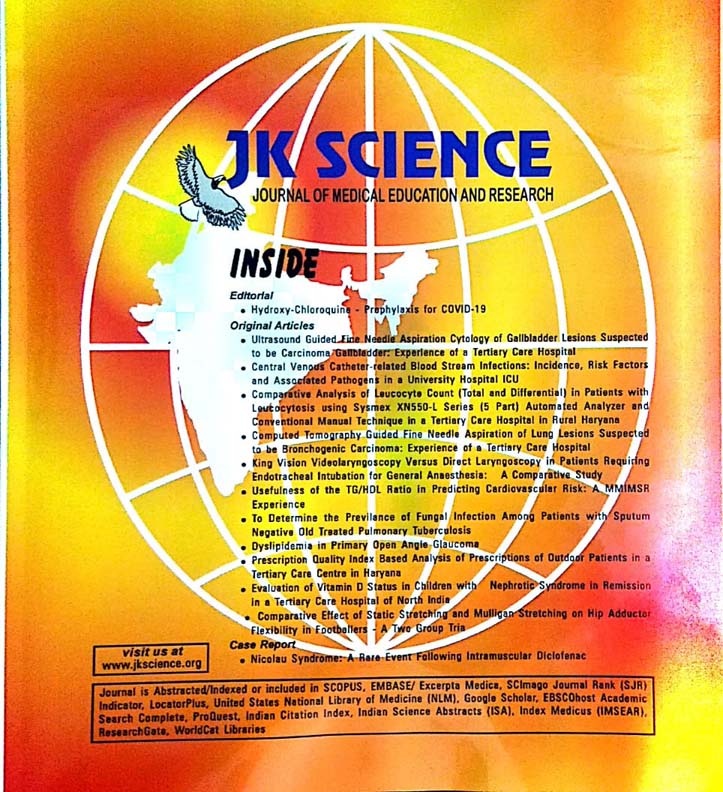A Comparative Study of Serous Effusions by using Routine Staining Methods and Modified Cell Block Technique
Keywords:
Serous Effusions, Conventional Smear, Cell BlockAbstract
Background: Cytological examination of serous fluids is an important diagnostic modality. However, accurately distinguishing reactive or malignant changes is diagnostically challenging. Cell block (CB) technique is dependable procedure as it improves the diagnostic accuracy. Advantage of cell block is the potential to make many sections for special stains and other ancillary techniques.
Objective: To compare the utility of CB technique compared to conventional smear in fluid cytology.
Material & Methods: The study comprised of analysis of serous effusion samples of pleural, peritoneal and pericardial cavities. All the samples were studied by both conventional smear method and modified cell block technique.
Results: In the present study, a total of 100 serous effusions were studied by using comparative approach of routine staining methods and modified cell block technique. By using conventional smear method, 84 cases were reported as inflammatory, 16 were diagnosed as malignant. Out of 100 cases of cell block preparation, 76 were inflammatory in nature and 20 cases were found to be malignant in nature. Four cases which were reported as negative for malignancy by conventional smear method were proven malignant on cell block thus increasing the diagnostic yield
Conclusion: Cell block method of the study of body fluids is simple, rapid and cost effective and increases the diagnostic yield compared to the routine methods. It increases the diagnostic accuracy when used as an adjunct to conventional smears.
Downloads
Downloads
Published
How to Cite
Issue
Section
License
Copyright (c) 2022 JK Science: Journal of Medical Education & Research

This work is licensed under a Creative Commons Attribution-NonCommercial-ShareAlike 4.0 International License.





